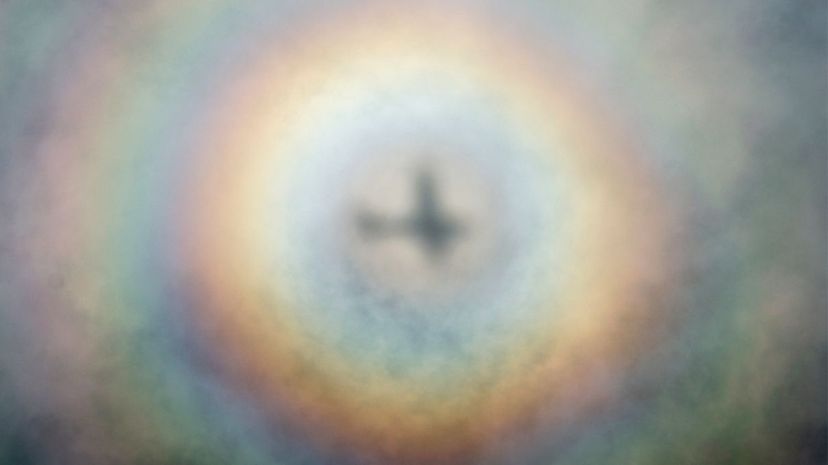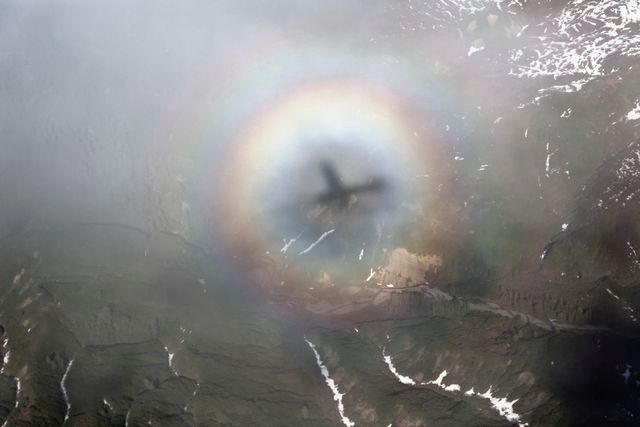
Key Takeaways
- A "Pilot's Glory" is an optical phenomenon where a halo appears to encircle an airplane's shadow against clouds, caused by the backscattering of sunlight by tiny water droplets in the atmosphere.
- The phenomenon requires the viewer to be directly between the source of light and the water droplets, with the size and distribution of the droplets affecting the appearance of the glory.
- The main cause of a glory is a process called wave tunneling, where sunlight creates electromagnetic waves within a droplet, which then bounce around inside and eventually exit, forming the visible halo.
If you've ever flown in an airplane and gazed out the window for long enough, chances are that you've noticed what appears to be a halo encircling the plane's shadow against the clouds. It might seem spiritually inspiring — or maybe a little spooky — but what you saw was nothing paranormal.
A glory, also known as a glory of the pilot, a pilot's glory or a pilot's halo, is actually an optical phenomenon, first observed by mountain climbers in the days before air travel became common. It's not created by the shadow of the plane, but it can appear concurrently and in the same place as one.
Advertisement
According to this 2012 Scientific American article by Brazilian physicist H. Moyses Nussenzveig, the first reported observation of a glory was back in the mid-1700s. Members of a French scientific expedition climbed Pambamarca, a mountain in Ecuador, and the mountaineers described seeing the sun emerge from behind a cloud and illuminate them, casting each man's shadow and surrounding their heads with what looked like halos.

It wasn't until the early 1900s that German physicist Gustav Mie came up with a mathematical formula to explain how water droplets suspended in air can scatter light. As this article from the meteorological journal Bulletin of the American Meteorological Society details, glories are created by the backscattering — that is, the deflection at an angle — of sunlight by tiny droplets of water in the atmosphere. (And by tiny, we mean droplets so small that they're only tens of wavelengths across.)
The size of the rings for different wavelengths of light varies, according to the average diameter of the droplets and their distribution; to see a glory, the viewer has to be directly in between the source of light and the water droplets, which is why glories frequently occur with shadows.

But even Mie's math didn't completely explain how glories worked. In the 1980s, Nussenzveig and NASA scientist Warren Wiscombe figured out that much of the light that forms a glory doesn't actually pass through the droplets. Instead, as this 2014 piece in the journal Nature explains, the main cause of a glory is a process called wave tunneling, in which sunlight passes near enough to a droplet to create electromagnetic waves within it. Those waves bounce around inside the droplet and eventually get out, sending out light rays that make up most of the glory that we see.
Advertisement
